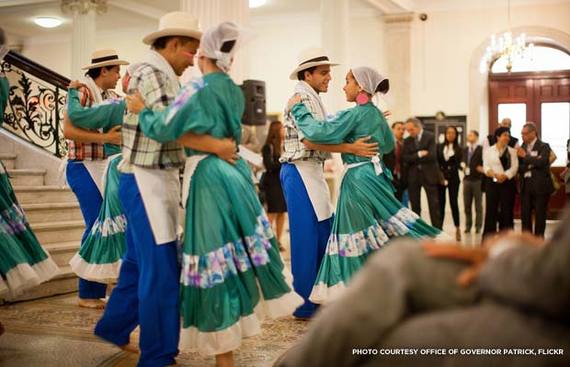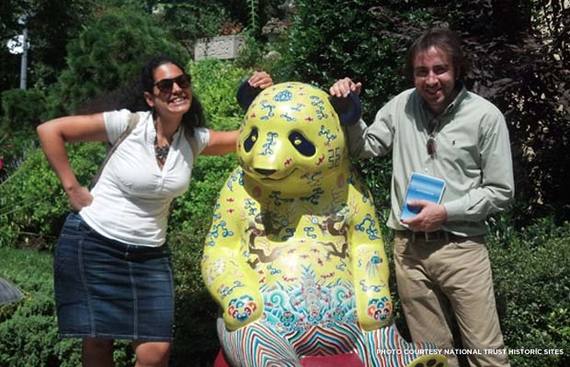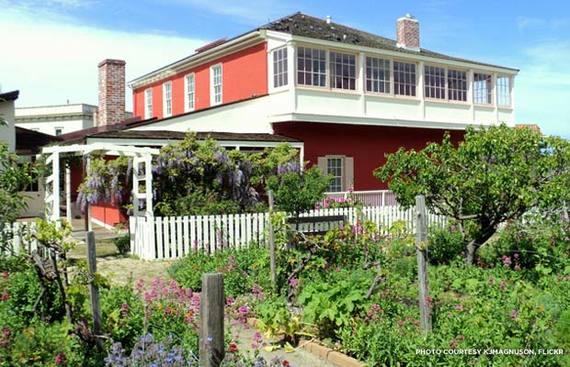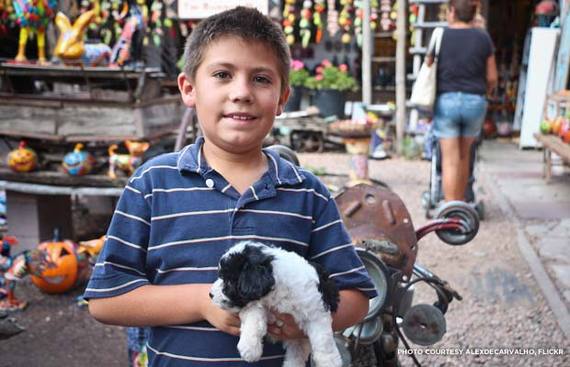By: Adriana Gallegos
Hispanic Heritage Month just wrapped up, and as always, showcased the history and accomplishments of Hispanics and Latinos in the United States. Today we're highlighting two rising Latino scholars who spent the summer working with us on some important projects. Thanks to the National Trust's partnership with the Smithsonian Latino Center (SLC), we were able to help empower the scholars to become leaders in the interpretation of Latino art, culture, and history.
One scholar is Ivel Gontan, a Cuban-American with a Master's of Museum Studies from John F. Kennedy University. This summer, she worked on a community engagement plan for the three National Trust Historic Sites in Washington, D.C.
Our other scholar, David McCormick, is proud of his Peruvian and Guatemalan roots, and also quite passionate about his career as an archaeologist. He gave us his perspective on his experience at the National Trust and about reaching out to diverse audiences.
I had the chance to interview Ivel and David and learn more about their passion to engage the Latino community in the conversation about preservation.
Why did you decide to apply for the Smithsonian Latino Center program?
IG: I decided to apply for the Smithsonian Latino Museum Studies program because I am interested in Latino issues in the context of the museum environments -- particularly issues of museum advocacy in favor of making them more accessible to Latino audiences, but also issues of representation and relevancy.
What type of project did you work on at the National Trust?
DM: I developed a plan for the use of the archaeological collections of the Cooper-Molera Adobe in Monterey State Historic Park for interpretive use in the museum and online. This project taught me to use primary reports and virtual archives to create a useable product.
IG: I worked on developing a community engagement plan that targeted Latino audiences. [The plan] comprised of a preliminary assessment of perceived potential barriers and a set of potential collaborators in the community. [It also] included ideas for collaboration as well as an instrument for a future community engagement specialist to use to assess the community needs.
How do you hope more people will learn about historic sites that represent Latinos in some way?
IG: I think that there is a disconnect for Latinos to the continuity of the United States historical timeline, a sort of "us and them" dynamic. Historic sites relatable to the Latino experience in the U.S. have a very real potential to bridge that disconnect; the challenge of course is in engaging populations that have been traditionally slighted by historic sites.
DM: Certainly, I think it is important to remember that what is now the United States by right of conquest was once Spanish by right of conquest and then Mexican by right of independence. This is a chapter not well told in our history books and certainly not part of our national narrative. The stories told by the historical and archaeological evidence at Cooper-Molera are very important into understanding a uniquely American story.

Governor Deval Patrick celebrates the 25th Annual Hispanic Heritage Month at an event honoring Latino civic and community organizations at the Massachusetts State House.
How could Latinos be better represented in historic sites, museums, arts, etc. in the U.S.?
IG: This question merits an essay in itself, but it could also very well be summarized in two words: ask them. Latinos have never really been part of the conversation in terms of representation and access; if you want to know what matters and how to better serve a community, there is no better way to do that than to find out what matters to them.
I think the biggest mistake an organization can make is to assume what the best approach will be without letting the community feedback inform their efforts. The best intentions can lead to disastrous consequences if you don't let evaluations play a role in structuring content. Latinos are not a homogeneous population; individual communities will be the best launch pad to begin negotiating issues of representation.
DM: Well, the truth is that they are marginalized. Latinos have essentially been part of this nation's history since before it was a nation, the colonial periods of both Spain and Britain. Latinos are no less "American" than people of Anglo descent.
The Cooper-Molera Adobe is a perfect example. From what I understand it focuses on the Cooper family, when in fact it was only primary residence to the family for the first dozen or so years. It was the long-time home to Manuel Diaz, a Yankee sympathizer, whose fortunes turned sour when he became a United States citizen. So really I think the way to un-marginalize Latinos is to tell the whole story.
What did you think of your experience with the program?
IG: I was truly honored to be a part of the National Trust for Historic Preservation's efforts in attempting to engage traditionally marginalized communities. I think that these efforts should be heralded and emulated by art museums, historical societies, science museums, and natural history museums across the country.
I cannot overstate the importance of engaging diverse audiences as I believe this is going to ultimately be the key to relevancy and survival for many of these types of organizations in the coming years. It won't be easy, but it will be worth your while.
DM: I believe that I made some important connections at both the National Trust and the SLC. I think it is important as an archaeologist working in the United States to have expertise beyond one's major geographic focus. This experience certainly brought me out of my comfort zone and I learned about a time and place I had little reference on.
I very much enjoyed my time at the National Trust for Historic Preservation and I recommend an experience here, either through the SLC or as an intern/fellow, for the professional development of anyone wanting to work in historic preservation or cultural resources.
---
Interested in applying for next year's Smithsonian Latino Center fellowship at the Trust? Visit the Latino Museum Studies Program for more information. The deadline will be in spring 2014. We look forward to meeting other talented Latino scholars next year!



